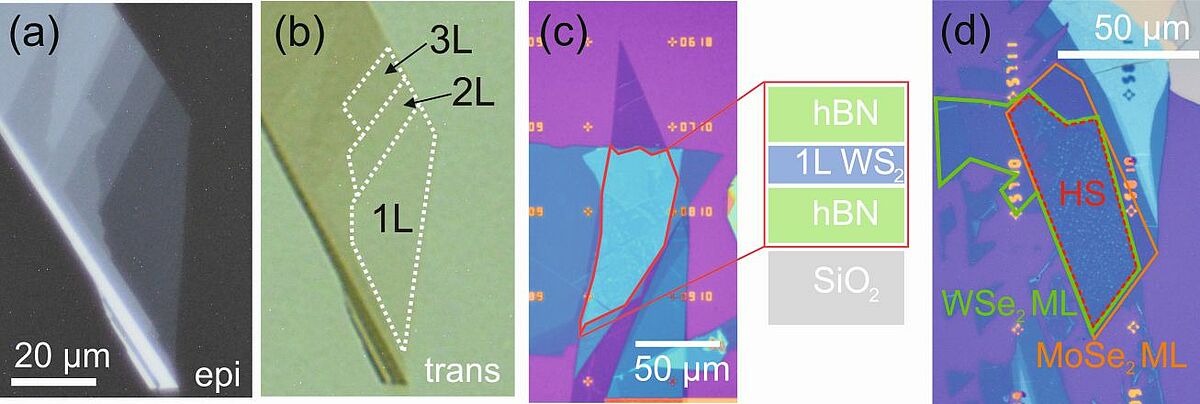Preparation of two-dimensional crystals and heterostructures
We utilize mechanical exfoliation to fabricate atomically thin layers out of various bulk materials (graphite, hexagonal boron nitride, transition-metal dichalcogenides). Using deterministic transfer processes, we stack these layers into van der Waals heterostructures.

Atomically thin layers of ReS2 are visible in optical microscopy using (a) bright-field and (b) transmission geometry (see P. Nagler et al., Observation of anisotropic interlayer Raman modes in few-layer ReS2, Phys. Status Solidi RRL 10, 185 (2016)). (c) Monolayers of transition metal dichalcogenides (TMDs) (here WS2) can be encapsulated between thin layers of hexagonal boron nitride (see P. Nagler et al., Zeeman Splitting and Inverted Polarization of Biexciton Emission in Monolayer WS2,Phys. Rev. Lett. 121, 057402 (2018)). (d) Large-area heterostructures consisting of different TMD monolayers can be crystallographically aligned using well-defined cleavage edges (see P. Nagler et al., Interlayer exciton dynamics in a dichalcogenide monolayer heterostructure, 2D Mater. 4, 025112 (2017)).
